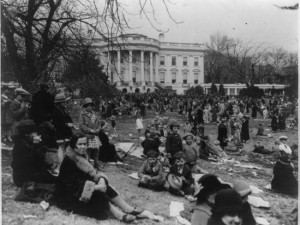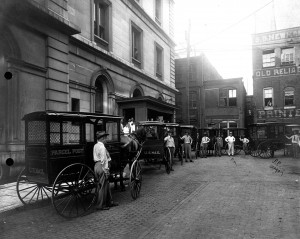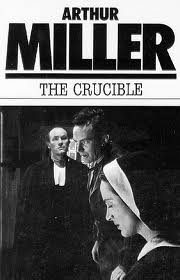Feb
10
Digitized Primary Sources
February 10, 2014 | Theory and Practice | 1 Comment
Both sources chosen are primary sources which are portrayed through the digital means of a website. One depicts a collection of maps of D.C (source 1) and the other depicts a chronicling of America with a focus of D.C (source 2).
Source 1: The maps depict a variety of information from a general map with distance, to a list of homeowners near their respective property, to bird’s eye views of parts of D.C such as Anacostia. There are hand sketched maps as well as digitally created ones which shows the long standing history D.C holds. In particular, it can be shown that it served as not only a home of the nation’s capitol, but as well as a prospective rebel battle ground with the map of a rebel attack on D.C on catalog. In analysis of this particular source, research went into the credibility of the site to ensure that the documents do come from a trusted source.
Source 2: The newspaper articles provide a large amount of information. The tool bar at the top of the site allows the reader to toggle through various states in order to find particular articles specific to not only the state but a time period as well. These articles are cataloged in the Library of Congress website, but there are more sources provided in order to supplement information if needed. The allowance of the reader to choose particular time periods to view helps piece together history as you can take it time period by time period which puts everything in chronological context and creates a greater understanding. In particular to D.C, it is shown that during the early 1900’s, it was a normal occurrence to have religion put into newspapers. This shows a strong disconnect between the idea of desperation of church and state which is still in disconnect to this day.
Analysis:These sources can be considered credible due to the association the Library of Congress has with accuracy. In context, they serve as crucial pieces of history because the maps and news articles cover a broad range of dates which enable a clearer understanding. During the close reading it was noted that the maps contained homeowner names showing how D.C must have been fairly small in vicinity to have a detailed list of homeowners so readily available.The close reading of the news articles indicate that news companies were more lenient with what was allowed in the papers, especially with the idea of separation of church and state. The maps and news articles can be confirmed as primary sources because they are dated, include a contributor, and come from a reputable source. Both sources were fairly easy to work with.
Source 1: Library of Congress Maps
Source 2: Chronicling America
Feb
3
Website Reviews
February 3, 2014 | Theory and Practice | Leave a Comment
Website Review
Websites chosen to be reviewed include 100 Years of Parcels, Packages, and Packets Oh My! and 17th Century New England.
100 Years of Parcels, Packages, and Packets Oh My!
The purpose of the website is to examine 100 years worth of the history of the parcel post by examining congressional opposition, preparation, and the all over history of the packages. This website was created by Nancy A. Pope, in coordination with the Smithsonian National Postal Museum. Considering the status of the Smithsonian, the site can be considered credible since a museum can be considered an authority on the topic since there is specialization in the history of parcel services.There is a brief amount of information that was taught prior to the exploration of the website. The site seems to be designed for all audiences since the site is easy to use, holds simple language, and has picture aids to help with the understanding of the content. Resources included are direct quotes, figures such as the ones found on the page titled “Congressional Opposition”, and important information regarding the history are all included as well as documentation of all sources. The documentation is easy to see at the bottom of each page. It seems to be cited very simply and perhaps not in the right format. Since many examples of the parcel post are included there is a variety of resources. The website seems to be objective with a strict reliance on fact to create an accurate representation of history. Navigation wise, it was simple to navigate with not only a side bar but also with arrows to toggle through the next and previous pages as found at the bottom of each page. The site holds value due to the source of the Smithsonian Museum as in affiliation with the site and the content of information with figures and facts are valuable, but it does not necessarily provide in depth parcel facts for the years following the 1800’s.
17th Century New England
What is the purpose of the website? The purpose of the site is to proved a history of 17th century New England through a variety of media such as images, text, and various resources. It is unclear who created the website but it is noted at the bottom of the page that it was last edited by Margo Burns. It is unclear whether they are credible or not because there is no information provided. Since the page seems to be able to be edited by anybody like a forum it can be concluded that the site is not credible. Most of the information was already known due to various history classes and information already taught. The site seems to be designed for all audiences but is very difficult to navigate. The navigation is provided at the bottom of the page so it is difficult to find information quickly, the page must be in explored in depth to find information you are looking for. Resources included are images and text, and primary sources. The content is not appropriately documented but does provide hyperlinks to where information can be found. The site is objective with factual information. The materials back this statement up with documentation of where the information can be found. No it was not easy to navigate! The site was not valuable considering most of this information can be found in a history textbook or another site that is easier to use.
Jan
27
Digital Autobiography
January 27, 2014 | Theory and Practice | Leave a Comment
I am a freshman at George Mason University.
Currently I am studying Visual Art and Technology with a concentration in drawing so in simple terms I’m a drawing major. I do not plan on staying at Mason for too long however. I am looking into transferring schools to Virginia Commonwealth University to be hopefully accepted into their top accredited art program. Other than being an art major, I am very interested in EDM (electronic dance music) and spend a lot of time at Echostage in D.C. As well as music and drawing, I enjoy cooking and skiing in the winter months with my family. We are all skiers and my sister competitively skis for the UVA Ski Team. My purpose for taking this class is to fulfill my I.T credit to graduate. I am in hopes this credit will transfer smoothly over to VCU so I won’t be at a disadvantage. To be honest, I am hoping this class will be easy to understand because I have to admit I am not the most tech savvy person out there even though I am born into an era of technology.
I spend a lot of time on the internet.
My online activity includes the use of a variety of sites. I use my smartphone in which I can access the internet as well as my laptop on a daily basis. The main use I have for the internet is for social media purposes and forums. Some sites I use include:
- Youtube
- Tumblr
- Reddit.com
Other than using the internet for various social media and forums, I browse through news articles on a daily basis through the Washington Post. I use texting on a daily basis which allows me to stay in constant contact with people at all times. For school purposes, I use online resources for research as well as Google to answer any questions on subject material I may have if I cannot contact my professor in time.
Jan
27
Hello world!
January 27, 2014 | Uncategorized | Leave a Comment
Welcome to onMason. This is your first post. Edit or delete it, then start blogging!



